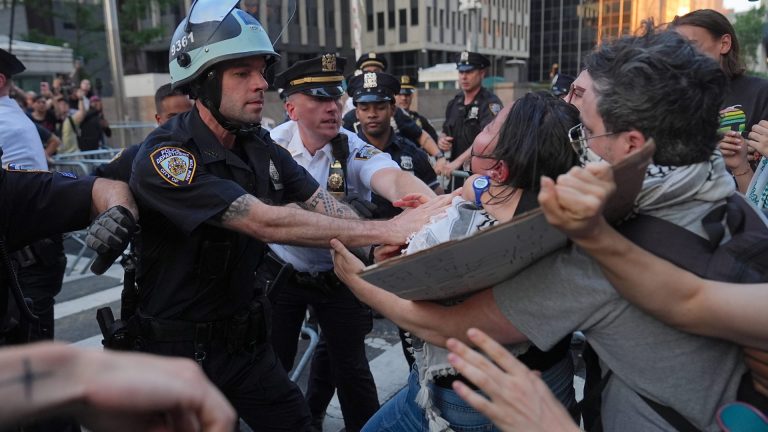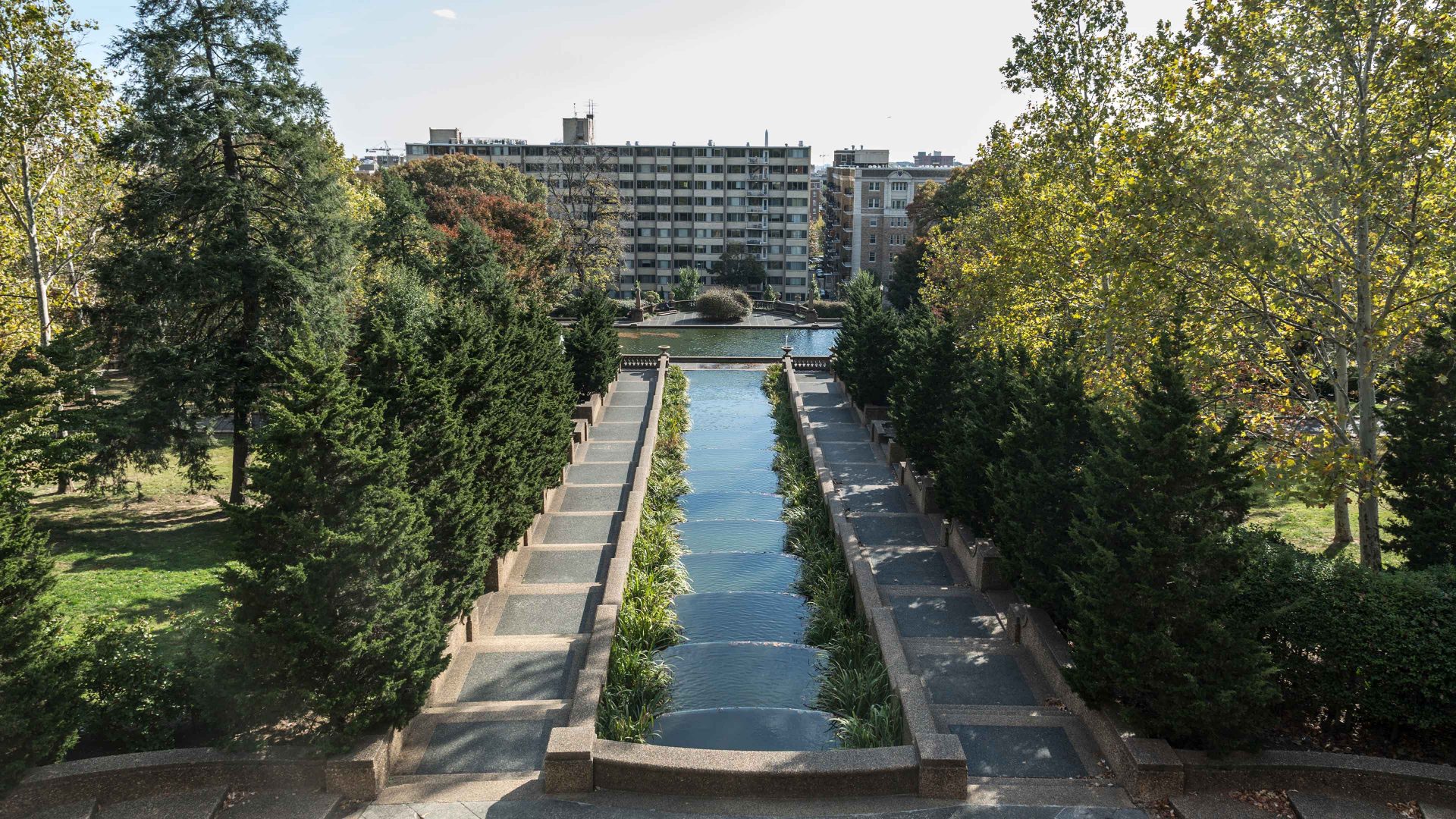Your TARDIS has materialised who knows where. You take a peek outside. Where is this? A lush garden with fountains, balustrades, staircases leading to tree-lined walkways, and waterfalls tumbling down a hillside. A park in Montmartre, or a 19th-century Italianate public garden? Florence, perhaps?
But you look closer. Those balconies, imposing statues and stairs aren’t marble. They’re made from concrete. What is this place?
You’re in the middle of Washington DC, in Meridian Hill Park. Bounded to the west by 16th Street which runs south directly to the White House two-and-a-half kilometres away, this area was once home to the city’s gentry and is surrounded by fading Beaux Arts-style mansions that once housed the delegations of foreign governments.
In 1910, Congress authorised a five-hectare park “in the grand urban style found in European capitals”. Perched on a steep slope, it was designed by architects George Burnap and Horace Peaslee, based on gardens Burnap had visited in Europe. The upper portion would feature gardens in French Baroque style, the lower half Italian Renaissance, with a terraced, cascading fountain and carp-filled pools.
And, this being the rapidly modernising United States, expensive marble was eschewed in favour of a new material. Sculptor John Joseph Earley suggested concrete aggregate, a mix of cement and pebbles, brushed and washed with acid exposing its roughened texture. The result was quite magnificent: public gardens where both elite and hoi polloi could stroll in shaded paths while appreciating inspirational statues, including Joan of Arc and Dante.
Suggested Reading

Inside Brooklyn’s battle with Trump’s goon squad
Completed in 1936, the park became a gathering place for protest, such as the anti-Vietnam war marches and meetings of black civil-rights activists. It’s colloquially known as Malcolm X Park, following Angela Davis’s 1969 speech in his memory.
In 1968, after the assassination of Martin Luther King, rioting and destruction of property in downtown Washington saw middle-class families flee to the suburbs. The park slowly fell into disuse. By the 1980s Meridian Hill had a reputation for crime, vandalism and drug dealing. The Washington Post named it “crack park”. Not a place to wander after dark.
Redemption came in the 1990s, when residents formed Friends of Meridian Hill and set about rejuvenating the space. They organised volunteer patrols, restored the flower beds and invited community groups to run programmes and concerts.
“My apartment has no backyard so this is my garden,” said Bethany Meyer, who is 24. “And I see more in the park than I would from a backyard.”
My last visit coincided with September’s “We are All DC” march, protesting against Trump’s decision to flood Washington’s streets with the National Guard. Marchers made their way to Freedom Plaza via Meridian Hill to hear speeches, passing the White House as they went. Protesters also told tales of violence in their normally peaceful neighbourhoods during ICE raids. The homemade anti-Trump banners read: “In your guts, you know he’s nuts”; and “Imagine being scared of diversity but not dictatorship”.
On a Sunday, stalls promote any number of political causes from the Palestinian Feminist Collective to the Claudia Jones School for Political Education to flyers demanding freedom for political prisoners in the DRC. I was handed a leaflet from the Democratic Socialists of America. When I suggested socialism and the “radical left” were currently having a bad time in the US I was told membership had “boomed” since Trump’s inauguration. The park is a hub of leftist and progressive protest. The Proud Boys would not be welcome. It’s basically everything MAGA loathes.
Meanwhile, good news for park-goers. A refurbishment programme starts in 2027. “The Biden administration set aside $2m,” says National Park Service public affairs officer, Autumn Cook. Leaking ponds will be fixed, damaged balustrades replaced and fountains will spout again. All assuming the federal government funds come through, of course. If DOGE gets a whiff of the kind of person who uses the park, then who knows?
Mick O’Hare is a freelance journalist, author and editor




